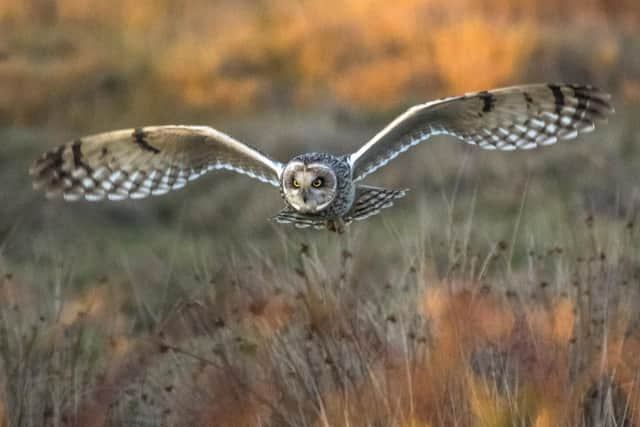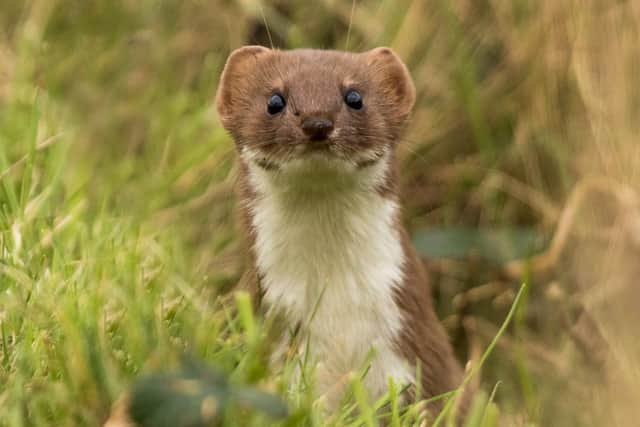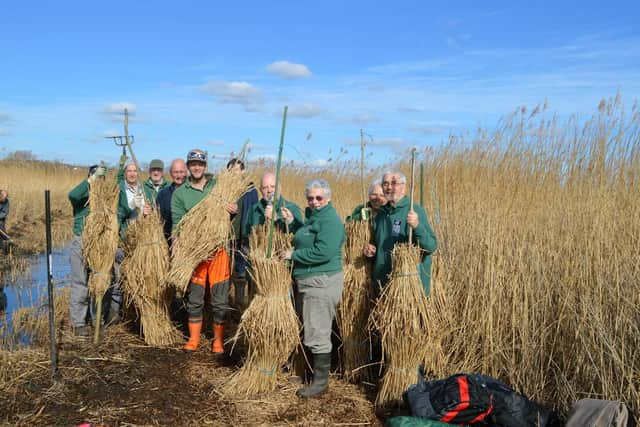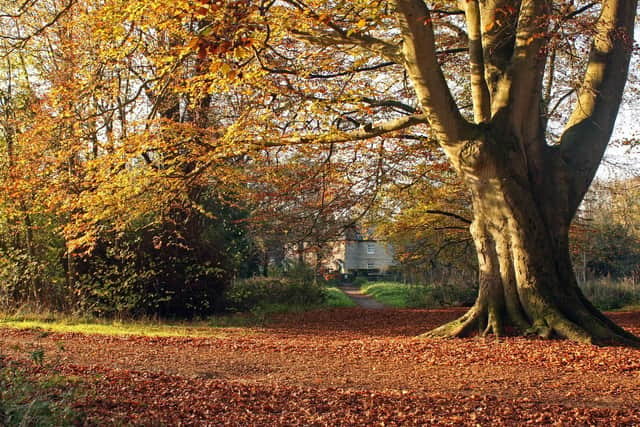Portsmouth, Fareham and Havant's wildlife enjoy a winter wonderlandÂ


Over at Stansted Forest, in Rowlands Castle, there's every chance that if you're on a walk this weekend you'll see a deer darting through the trees.
Our coastline and countryside are teeming with wildlife at this time of year.
Advertisement
Hide AdAdvertisement
Hide AdBut who looks after it all? Because without careful management endangered species such as the water vole, Brent geese and lapwings could not survive.Â


Although the RSPCA will come to the rescue if a wild animal is injured the responsibility of caring for habitats falls to a wide range of organisations '“ including local authorities, private landowners and charities.Â
Hampshire and Isle of Wight Wildlife Trust (HIWWT) looks after Farlington Marshes, Milton Locks and Swanwick Lakes.Â
As well as weasels, foxes and rodents, twitchers are out in force looking for redshanks, black-tailed godwits, curlews, dunlins and those big, awe-inspiring short-eared owls.Â
Advertisement
Hide AdAdvertisement
Hide AdThe marshes are highly protected and the Solent is a winter wonderland for migratory waders who find the temperatures positively balmy compared to the Arctic.


And it falls to reserves office Chris Lycett to ensure their habitat is safe for them to thrive '“and keep coming back.Â
He says: '˜Farlington Marshes is a coastal grazing marsh where there are very rare and endangered species, such as the lapwing and Brent geese.
'˜The key at Farlington Marshes is providing safe sites for our wintering birds to roost.
Advertisement
Hide AdAdvertisement
Hide Ad'˜Brent geese come down from the Arctic in the winter to rest in and around Langstone Harbour. My job is to ensure the habitat is in good condition for them.


'˜At this time of year a lot of what we do is scrub management.
'˜We clear the bramble and blackthorne because the birds don't like it if they're grazing on the marsh. Buzzards and other birds of prey can sit on it and pick off their prey.Â
'˜We bring on cattle to keep the grass at the right length. They will be finishing grazing about now and moved off soon.
Advertisement
Hide AdAdvertisement
Hide Ad'˜It needs to be about the same height as a the turf on a football pitch for the birds to eat it. Because it's a marsh the wader birds such as black-tailed godwits and curlews need it short to be able to probe the ground and pick out worms and other invertebrates.'
Extra support has led to happy outcomes elsewhere. Until the South Downs National Park Authority stepped in, water voles were almost extinct. But a reintroduction programme has seen Ratty return to the River Meon, including at Swanwick Lakes, also run by the HIWWT.Â
Michael Prior roams the 1,800 acres of parkland and forest at Stansted, as head forester. And he says there is so much to see. '˜When people think of wildlife they often concentrate on the obvious more appealing subjects such as badgers and deer but there is a great deal more going on out there if people are observant.Â
'˜In our management of the forest and parkland we do targeted work to assist specific creatures, such as nesting plots for lapwing and rough margins for barn owls to hunt along. But in general we try to create and manage as broad a range of habitats as possible.
Advertisement
Hide AdAdvertisement
Hide Ad'˜This means we are creating living space for everything from fantastic fungi to incredible insects.
'˜Management is the key word because, in a country where there are no natural wild areas anymore, leaving things to nature would not give us the patchwork quilt of habitats we have.
'˜Even our commercial forestry operations provide them as areas we have recently felled are replanted with conifers that not only absorb a huge volume of carbon as they grow but the newly planted areas provide habitat for rare ground nesting birds such as nightjar and woodlark.
'˜The fact that we have to fence these areas to keep deer out means these and many other creatures using these plantations are safe from unwanted disturbance by people and dogs.'
Advertisement
Hide AdAdvertisement
Hide AdStansted Forest is known for its wonderful old trees which Michael and his team manage. He adds: '˜They are truly skyscrapers of habitat, full of cavities and rot pockets which are used by owls, bats, beetles, bees and the rugged trunks provide homes for colourful lichens.
'˜Decaying wood, both standing and on the woodland floor, is of vital importance as hundreds of organisms recycle this back into the forest soil. We therefore do not burn anything in the forest and if it is not sold to bring in income it is left to create the basis for future forest fertility.'
Walkers are warmly welcome in the countryside and coastal areas. But they have a responsibility to keep wildlife safe too.Â
Litter is a big problem for fish and birds on the coast, while dogs running off-leads can also lead to danger for mammals.Â
Advertisement
Hide AdAdvertisement
Hide AdThere have been a number of incidents of dogs attacking deer and disturbing birds during nesting season. Wardens patrol areas to ensure dog owners, and other humans, treat wildlife with respect. Many warden roles are taken by volunteers, which local authority-run country parks such as Staunton and Queen Elizabeth, HIWWT and private estates such as Stansted, rely upon for conservation and wildlife management.Â
Chris, from HIWWT, says all the hard work is worth it.
He says: '˜Last summer we had avocets breeding on-site for the first time '“Â big black and white birds with curved beaks. It's a sign they're doing better as they had declined massively. Hopefully they're here to stay.'
helping injured wild animals
If you spot a wild animal in distress the organisation to go to is the RSPCA.
In 2017, they rescued 72,144 wild animals.
One of the big concerns for the welfare of wildlife is litter. The charity receives more than 5,000 calls a year regarding wild animals injured by litter '“Â wild birds in particular.Â
What to do if you spot an injured wild animal:
Advertisement
Hide AdAdvertisement
Hide AdWild animals can scratch and bite when frightened, particularly if they are injured.  If in doubt, keep a safe distance and call the RSPCA on 0300 1234 999.Â
Apply common sense when approaching an injured animal '“ do not attempt to handle or transport an injured deer, seal, wild boar, otter, badger, fox, snake, bird of prey (including owls), swan, goose, heron or gull, keep a safe distance and call the RSPCA.
Never lift a wild animal, unless you are sure that you can do so without risk to yourself or others.  Â
Wear gloves when handling all wild animals, especially oiled wildlife '“ pollutants like oil can be hazardous. Â
Keep the animal away from your face.  Â
Wash your hands thoroughly after handling an animal. Â
Advertisement
Hide AdAdvertisement
Hide AdTake care in dangerous locations, such as a busy road. Watch from a distance first to see whether the animal is still alive, call for help if you can't reach it safely. Â
For injured marine life, such as a whale, dolphin or porpoise on a beach, call the RSPCA or the British Divers Marine Life Rescue on 01825 765546.Â
Always keep a safe distance and don't touch the animal. Â
Report dead animals at the side of the road to the local authority.Â